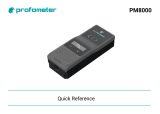
2
Safety
Improper use or maintenance by the operator or
owner can result in injury. To reduce the potential
for injury, comply with the safety instructions in
the traction unit operator’s manual and always
pay attention to the safety alert
symbol, which
means CAUTION, WARNING, or
DANGER—“personal safety instruction.” Failure
to comply with the instruction may result in
personal injury or death.
POTENTIAL HAZARD
• There may be buried power, gas, and/or
telephone lines in the work area.
WHAT CAN HAPPEN
• Shock or explosion may occur.
HOW TO AV
OID THE HAZARD
• Have the property or area to be broken
marked for buried lines and do not break
in marked areas.
POTENTIAL HAZARD
• Contact with moving breaker may cause
injury.
WHAT CAN HAPPEN
• Moving breaker can crush hands, feet or
other body parts.
HOW TO AV
OID THE HAZARD
• Keep your hands, feet, and any other part
of your body or clothing away from moving
parts.
• Before adjusting, cleaning, repairing, and
inspecting the breaker, lower it to the
ground, stop the engine, remove the key,
and wait for all moving parts to stop.
POTENTIAL HAZARD
• When the engine is off, attachments in the
raised position can gradually lower.
WHAT CAN HAPPEN
• Someone nearby may be pinned or injured
by the attachment as it lowers.
HOW TO AV
OID THE HAZARD
• Always lower the attachment lift each time
you shut off the traction unit.
POTENTIAL HAZARD
• During operation, the breaker thr
ows small
pieces of broken material and dust.
WHAT CAN HAPPEN
• Flying debris may damage eyes.
• Inhaling the dust can damage lungs.
HOW TO AV
OID THE HAZARD
• The operator and all bystanders must wear
safety glasses, goggles, or a face shield
during operation of the breaker.
• The operator and all bystanders must wear
a face mask or other filter over mouths and
noses during operation of the breaker.
• Keep bystanders at least 25 feet away from
the beaker during operation.


















